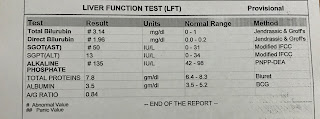CASE-
A 55 year old female came to the opd with the chief complaints of
1.palpitations (since 2months)
2.chest pain (since 2 months)
3.associated with shortness of breath
HOPI-
patient was apparently asympotamatic 2months back then she started having chest pain on left side more on epigastrium, non-radiating
-associated with palpitations
-and started developing shortness of breath, around the same time, progressive in nature leading to present status of grade III-IV of dyspnoea.
-associated with PND (patient wakes up for air hunger) since 2 months increased in past 10days
-associated with bilateral pedal edema upto ankle since 1 week
-associated with decreased urine output since one week. (for which she took medications outside)
-no history of fluid loss
-no history of fever, cough.
HISTORY OF PAST ILLNESS-
-no similar complaints in the past
-no history of hypertension, diabetes mellitus, CKD, CAD, Tuberculosis, asthama.
-no history of rheumatic fever
FAMILY HISTORY-
no similar complaints in the family.
no history of HTN, CAD, rheumatic heart disease, obesity, diabetes, sudden cardiac death.
PERSONAL HISTORY-
diet-mixed
appetite-decreased
sleep-decreased
bowel&bladder-decreased urine
addictions-none
GENERAL EXAMINATION-
patient was conscious, coherent and cooperative
moderately built and nourished
no pallor,icterus,clubbing,cyanosis,lymphadenopathy.
edema- bilateral (upto ankle)
dehydration-mild
vitals-
temparature-afebrile
pulse rate-feeble
BP-110/70mmHg
spO2=98%
SYSTEMIC EXAMINATION:
I.RESPIRATORY EXAM=
-dyspnoea-present (grade III-IV)
-wheeze-heard on right side
-trachea-central in position
-breath sounds- vesicular in nature, with coarse crepitations heard (right>left)
II.ABDOMEN-
shape=scaphoid
no tenderness
all quadrants moving equally with respiration
hernial orifices are full
no organomegaly detected
bowel sounds heard
III.CNS EXAM:
higher mental functions normal
cranial nerves intact
motor system- normal
sensory system-normal
IV.CVS EXAMINATION:
1.pulse- 72bpm, feeble, irregularly irregular, condition of vessel normal, pulse defecit could not be elicited.
2.BP=110/70mmHg
3. neck veins examination= not engorged, elevated jvp with larger "a" component, hepato-jugular reflex didnot elicit.
4.examination of heart-
-inspection-
(precordial area)shape normal,
apical impulse not seen,
no engorged superficial veins
no polythelia,
no scar mark present
(beyond precordium)-no pulsations seen in other areas,
back-slight kypohosis present
-palpation:
a.mitral area:
-apex beat=changed, down and outward (in 6th intercostal space, in anterior axillary line)
-no thrills present
b.pulmonary area=normal
c.aortic area=normal
d.tricuspid area=loud S1 felt, no thrills
-no palpable pericardial rub,no tracheal tug.
IV.auscultation:
a.cardiac rate=72bpm,
b.irregularly irregular rhythm,
c.mitral area=loud S1,
d.tricuspid-loud S1
e.pulmonary area=splitting of S2-loud P2 component.
Based on the above findings, following investigations were sent
1.RFT
2.hemogram
3.CUE
4.CXR
5.ECG
-irregular rhythm, absent p waves, right axis deviation,
-ST elevation in V4 V5 aVR
Cardiomegaly, enlargement of rt atrium, rt ventricle, Lt ventricle
-calcified mitral valves
-fish mouth appearance
based on the above investigations, the provisional diagnosis is MITRAL STENOSIS with HEART FAILURE.
TREATMENT:
1.INJ.LASIX 2amp in 50ml NS @8mg/hr
2.oxygenation to maintain spO2 above 95%
3.nebulization with budecort 12th hourly
4.strict I/O charting
5.monitoring BP,PR hourly
6.fluid and salt restriction
7.head end elevation
8.inj.amiodarone 300mg (2amp) at 6ml/hr
9.inj.pantop 40mg/OD/iv
10.T. ecosprin 75mg/PO/OD
(some insight in the case's history= patient was a agricultural labourer 5 years ago, mostly into plantation in paddy fields, occasionally did labour of carrying the harvest, which eventually caused her weakness and she had to quit!)












Mam what are the characters of chest pain in this patiient?
ReplyDeletewhy is there decreased urine output maam ???/
ReplyDeleteMam , what is the rule of injection pantop in this patient? As some studies says it increases the risk of heart failure why it is prescribed in this patient?https://www.ncbi.nlm.nih.gov/pmc/articles/PMC5245803/
ReplyDeleteMam, palapations are belongs to which NYHA class?
ReplyDelete